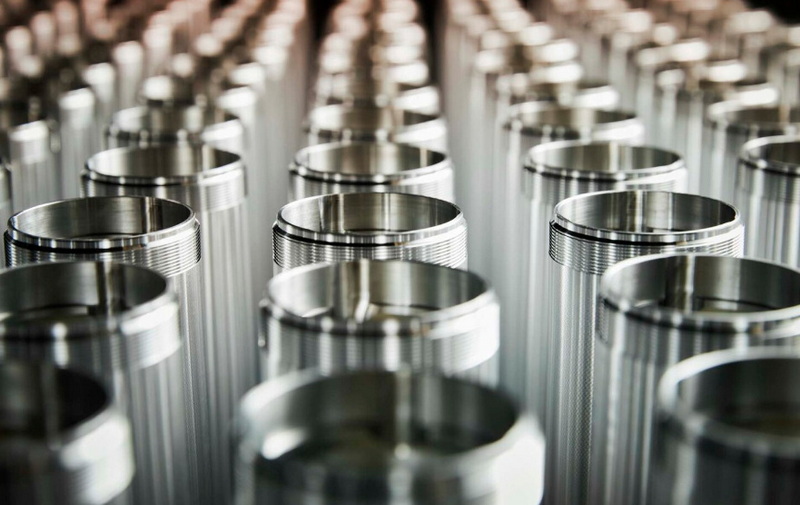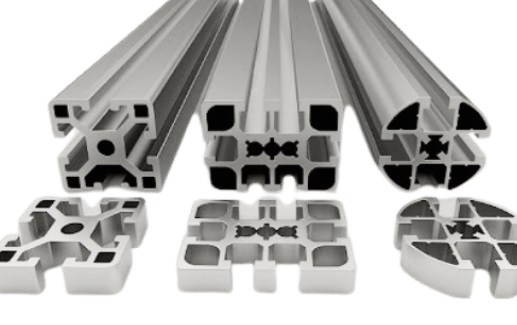Content Menu
● Introduction to Extrusion
>> Extrusion Process Overview
● Benefits of Advanced Equipment Used in Extrusion
>> 1. Enhanced Precision and Consistency
>> 2. Increased Efficiency and Productivity
>> 3. Sustainability and Energy Efficiency
>> 4. Customization and Versatility
>> 5. Cost-Effectiveness
● Innovations in Extrusion Technology
>> Role of Artificial Intelligence (AI)
>> Advanced Sensor Technologies
● Applications of Advanced Extrusion Equipment
>> Medical Tubing Extrusion
>> Aluminum Extrusion
>> Plastic Film Extrusion
● Future Developments in Extrusion Technology
● Impact of Advanced Extrusion Equipment on Industry
● Conclusion
● FAQ
>> 1. What are the key benefits of using advanced extrusion equipment?
>> 2. How does AI contribute to the extrusion process?
>> 3. What role do advanced sensors play in extrusion?
>> 4. How does modern extrusion equipment support sustainability?
>> 5. What industries benefit most from advanced extrusion technologies?
Extrusion is a fundamental process in modern manufacturing, used to create a wide range of products from plastics to metals. The advancements in equipment used in extrusion have significantly enhanced the efficiency, precision, and sustainability of this process. This article explores the benefits of advanced equipment in extrusion, highlighting how innovations in machinery, automation, and materials are transforming industries.

Introduction to Extrusion
Extrusion involves forcing a material through a die to create a product with a specific cross-sectional shape. This process is crucial in industries such as automotive, aerospace, construction, and medical devices. The versatility and efficiency of extrusion make it an essential tool for producing custom components to precise specifications.
Extrusion Process Overview
The extrusion process typically involves the following steps:
1. Material Preparation: Raw materials are fed into the extruder.
2. Melting and Mixing: The material is melted and mixed in the extruder barrel.
3. Shaping: The molten material is forced through a die to achieve the desired shape.
4. Cooling and Finalization: The extruded product is cooled and finalized.
Benefits of Advanced Equipment Used in Extrusion
1. Enhanced Precision and Consistency
Advanced equipment in extrusion, such as servo-driven extruders, offers precise control over parameters like temperature, pressure, and screw speed. This precision ensures uniformity in extruded products, reducing material waste and enhancing overall quality. Servo-driven systems allow for real-time adjustments, ensuring that the extrusion process operates within optimal parameters.
2. Increased Efficiency and Productivity
Modern extrusion machines are equipped with advanced control systems, such as programmable logic controllers (PLCs), which allow for real-time monitoring and adjustments. This results in consistent output rates, swift production, and reduced downtime. The integration of automation technologies also enables continuous operation with minimal human intervention, further increasing productivity.
3. Sustainability and Energy Efficiency
High-efficiency heaters and advanced cooling systems are designed to reduce energy consumption while maintaining high-quality extrusion outputs. These systems align with sustainability objectives by minimizing waste and energy usage. Additionally, modern extruders can process recycled materials, contributing to a circular economy and reducing environmental impact.
4. Customization and Versatility
Advanced extrusion machinery can process a wide range of materials, including bioplastics, allowing for custom profiles tailored to specific industrial needs. This flexibility enables rapid prototyping and faster time-to-market for new products. The ability to extrude complex shapes and profiles also supports innovation in product design.
5. Cost-Effectiveness
Investing in modern extrusion equipment offers cost-effective solutions by reducing the need for multiple machines, optimizing resource utilization, and minimizing waste. The energy-efficient design of these machines also leads to lower operational costs. Furthermore, the precision and consistency achieved with advanced equipment reduce the need for post-processing, saving additional costs.

Innovations in Extrusion Technology
Role of Artificial Intelligence (AI)
AI plays a crucial role in optimizing extrusion processes by analyzing data and predicting outcomes. AI algorithms enable real-time adjustments to process parameters, ensuring optimal performance and reducing material waste. AI can also predict potential issues before they occur, allowing for proactive maintenance and minimizing downtime.
Advanced Sensor Technologies
Modern sensors monitor temperature, pressure, and material flow rates with high precision, providing real-time feedback to control systems. This allows for immediate corrections to maintain consistent product quality. The integration of IoT technologies further enhances data collection and analysis, enabling more informed decision-making in the extrusion process.
Applications of Advanced Extrusion Equipment
Medical Tubing Extrusion
In the medical industry, advanced extrusion equipment is used to create high-quality medical tubes with precise wall thickness and diameter. This precision is critical for meeting the rigorous standards required in healthcare settings. Advanced extruders ensure that medical tubing meets the necessary specifications for safety and performance.
Aluminum Extrusion
Aluminum extrusion has evolved into a highly automated process, leveraging technologies like high-pressure extrusion and AI-driven quality control. This results in stronger, more durable profiles for critical industries such as aerospace and defense. The precision and consistency achieved with advanced equipment are essential for producing components that meet stringent safety and performance requirements.
Plastic Film Extrusion
Plastic film extrusion benefits from advanced equipment by producing films with uniform thickness and properties. This is crucial for applications such as packaging, where film integrity directly impacts product safety and shelf life. Advanced extruders can also produce films with specific barrier properties, enhancing their functionality in various applications.
Future Developments in Extrusion Technology
As technology continues to evolve, we can expect further innovations in extrusion equipment. The integration of more sophisticated AI and machine learning algorithms will enhance predictive maintenance and process optimization. Additionally, advancements in material science will expand the range of materials that can be extruded, opening new possibilities for product design and innovation.
Impact of Advanced Extrusion Equipment on Industry
The adoption of advanced extrusion equipment is transforming industries by enabling the production of high-quality, custom components efficiently and sustainably. This transformation is particularly evident in sectors where precision and consistency are paramount, such as aerospace and healthcare. As industries continue to evolve, the role of advanced extrusion equipment will remain central to meeting the demands of modern manufacturing.
Conclusion
The benefits of advanced equipment used in extrusion are multifaceted, enhancing precision, efficiency, sustainability, and cost-effectiveness. As industries continue to evolve, the integration of cutting-edge technologies such as AI and advanced sensors will remain crucial for driving innovation and meeting the demands of modern manufacturing.

FAQ
1. What are the key benefits of using advanced extrusion equipment?
The key benefits include enhanced precision and consistency, increased efficiency and productivity, sustainability and energy efficiency, customization and versatility, and cost-effectiveness.
2. How does AI contribute to the extrusion process?
AI contributes by analyzing data and predicting outcomes, enabling real-time adjustments to process parameters for optimal performance and reduced waste.
3. What role do advanced sensors play in extrusion?
Advanced sensors monitor process parameters with high precision, providing real-time feedback for immediate corrections to maintain consistent product quality.
4. How does modern extrusion equipment support sustainability?
Modern equipment supports sustainability through reduced energy consumption, minimized waste, and the ability to process recycled materials, aligning with environmental objectives.
5. What industries benefit most from advanced extrusion technologies?
Industries such as automotive, aerospace, construction, medical devices, and consumer goods benefit significantly from advanced extrusion technologies due to the need for high-quality, custom components.






















